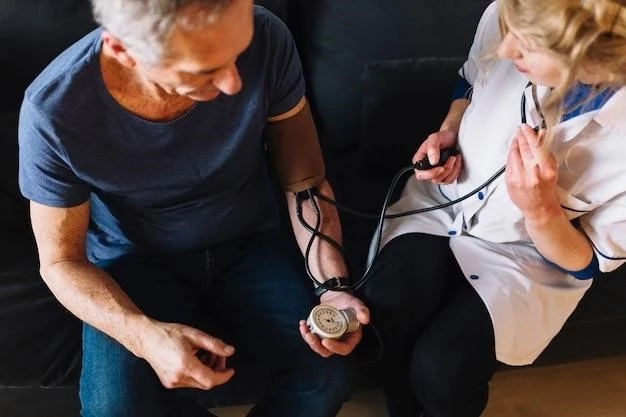Article Plan⁚ Understanding Norvasc in Hypertension Treatment
When considering Norvasc for hypertension treatment‚ it is essential to understand its uses. Norvasc is commonly prescribed to help lower high blood pressure. It works by relaxing blood vessels‚ allowing the heart to pump more efficiently. This can help reduce the risk of heart attacks‚ strokes‚ and kidney problems.
Norvasc Uses in Hypertension Treatment
When it comes to using Norvasc for hypertension treatment‚ it is crucial to follow your healthcare provider’s recommendations. Typically‚ Norvasc is taken once daily‚ with or without food. It’s essential to take the medication at the same time each day to maintain consistent blood levels. Remember to never adjust the dosage without consulting your doctor.
It’s important to monitor your blood pressure regularly while taking Norvasc to ensure it’s effectively reducing your hypertension. If you experience any side effects or have concerns about your blood pressure levels‚ contact your healthcare provider immediately. Do not stop taking Norvasc abruptly without medical advice.
Along with medication‚ maintaining a healthy lifestyle is key in managing hypertension. This includes following a balanced diet‚ engaging in regular physical activity‚ managing stress levels‚ and avoiding tobacco and excessive alcohol consumption. By incorporating these habits into your routine‚ you can enhance the effectiveness of Norvasc and overall hypertension treatment.
Remember‚ every individual’s response to medication can vary‚ so it’s essential to have open communication with your healthcare provider throughout your treatment. They can monitor your progress‚ adjust your dosage if needed‚ and address any concerns or questions you may have regarding Norvasc and its role in hypertension management.
Norvasc Side Effects⁚ Swollen Ankles
Swollen ankles are a potential side effect of Norvasc and should be monitored while on this medication. If you experience swelling in your ankles or feet that doesn’t subside or is accompanied by pain‚ redness‚ or warmth‚ contact your healthcare provider promptly. They can assess the severity of the swelling and determine the appropriate course of action.
When experiencing swollen ankles while taking Norvasc‚ elevate your legs when possible to help reduce the swelling. Avoid standing or sitting for prolonged periods‚ and consider wearing compression stockings to promote circulation. It’s important not to ignore persistent swelling‚ as it could be a sign of an underlying issue that needs to be addressed.
Hydrating adequately‚ limiting salt intake‚ and engaging in regular physical activity can also aid in managing swollen ankles while on Norvasc. If the swelling worsens or is accompanied by difficulty breathing‚ seek urgent medical attention as these could be signs of a severe allergic reaction or a more serious condition.
Remember‚ your healthcare provider is your best resource for addressing any side effects or concerns related to Norvasc. Open communication and regular follow-ups are essential in ensuring the medication is effectively managing your hypertension while minimizing side effects such as swollen ankles.

Information on Norvasc Drug Interactions
Understanding potential drug interactions with Norvasc is crucial to ensure the effectiveness of your hypertension treatment. Certain medications can interact with Norvasc‚ altering its effects or increasing the risk of side effects. It’s essential to inform your healthcare provider about all the medications‚ supplements‚ and over-the-counter drugs you are taking.
Some medications that may interact with Norvasc include other blood pressure-lowering drugs‚ potassium supplements‚ certain antibiotics‚ antifungal medications‚ and grapefruit products. These interactions can lead to changes in blood pressure‚ heart rate‚ or levels of Norvasc in your body‚ affecting its efficacy.
Discuss with your healthcare provider the risks and benefits of any potential drug interactions involving Norvasc. They may adjust your medication regimen‚ change dosages‚ or monitor you closely for any adverse effects. It’s important not to start or stop any medications without medical guidance while taking Norvasc.
If you experience unusual symptoms or side effects after starting a new medication while on Norvasc‚ seek medical advice promptly. Your healthcare provider can evaluate the situation‚ determine if it’s related to a drug interaction‚ and recommend appropriate actions to ensure your safety and the effectiveness of your hypertension treatment.
Norvasc Dosage and Overdose Concerns
Adhering to the prescribed dosage of Norvasc is vital for effective hypertension management and minimizing the risk of side effects. Typically‚ the initial dose of Norvasc for hypertension is 5 mg once daily‚ which can be adjusted based on your response. It’s important to follow your healthcare provider’s instructions regarding dosing and any dosage adjustments.
If you miss a dose of Norvasc‚ take it as soon as you remember. However‚ if it’s close to the time for your next dose‚ skip the missed dose and continue with your regular dosing schedule. Do not take a double dose to make up for a missed one. Consistency in taking Norvasc is key to maintaining stable blood pressure levels.
Overdosing on Norvasc can lead to severe complications and should be avoided. Symptoms of an overdose may include dizziness‚ fainting‚ rapid heartbeat‚ and difficulty breathing. If you suspect an overdose or experience these symptoms‚ seek immediate medical attention or contact a poison control center.
Keep Norvasc and all medications out of reach of children and pets to prevent accidental ingestion. Store Norvasc at room temperature away from moisture and heat. Proper storage and adherence to dosing instructions can help ensure the safety and effectiveness of Norvasc in your hypertension treatment plan.
Norvasc⁚ Benefits for High Blood Pressure and Angina
Norvasc offers significant benefits in managing both high blood pressure and angina. For individuals with hypertension‚ Norvasc helps relax and widen blood vessels‚ making it easier for the heart to pump blood. This can lead to lower blood pressure levels and reduced strain on the heart‚ decreasing the risk of heart disease and stroke.
When it comes to angina‚ Norvasc can improve blood flow to the heart muscle‚ reducing the frequency and severity of chest pain episodes. By dilating coronary arteries‚ Norvasc enhances oxygen delivery to the heart‚ helping alleviate angina symptoms and improve overall quality of life.
It’s important to recognize the dual benefits Norvasc provides in managing high blood pressure and angina. By effectively controlling blood pressure and improving blood flow to the heart‚ Norvasc plays a crucial role in reducing the risk of cardiovascular complications and enhancing heart health.
Consulting your healthcare provider about the benefits of Norvasc for your specific condition is essential. They can assess your medical history‚ symptoms‚ and treatment goals to determine if Norvasc is the right medication for you. By understanding the benefits Norvasc offers‚ you can actively participate in your hypertension and angina management‚ optimizing your cardiovascular health.
Understanding Norvasc⁚ Calcium Channel Blocker Mechanism
Understanding how Norvasc works as a calcium channel blocker is essential in comprehending its role in hypertension treatment. Norvasc targets calcium channels in blood vessels and the heart. By blocking these channels‚ Norvasc prevents calcium from entering muscle cells of the heart and blood vessels.
When calcium is blocked‚ the muscles relax‚ causing the blood vessels to widen and the heart to pump more effectively. This results in reduced resistance in the blood vessels‚ lowering blood pressure. The relaxation of blood vessels also improves blood flow‚ benefiting conditions like angina by increasing oxygen supply to the heart.
The calcium channel blocking mechanism of Norvasc is a targeted approach to managing hypertension and angina. By specifically acting on calcium channels‚ Norvasc helps regulate blood pressure and reduce the workload on the heart‚ promoting better cardiovascular health.
Discussing the calcium channel blocker mechanism of Norvasc with your healthcare provider can help you understand how the medication works in your body. By grasping the pharmacological action of Norvasc‚ you can appreciate its benefits in controlling high blood pressure and managing angina‚ enhancing your overall treatment experience.
